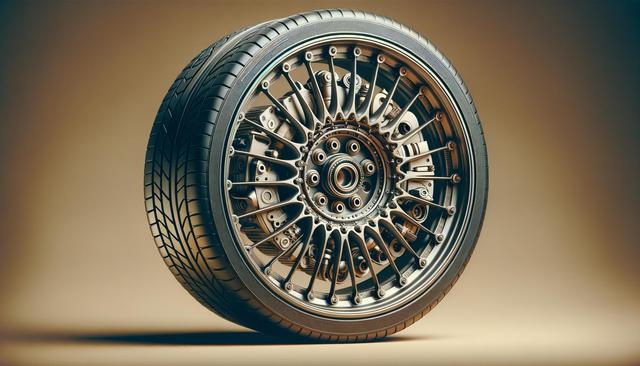Origins of the Wheel
The wheel is widely regarded as one of the most important inventions in human history. Its origins date back to around 3500 BCE in Mesopotamia, primarily used for pottery before being adapted for transportation. Early wheels were simple wooden disks, but their basic concept revolutionized movement and logistics. By allowing heavy loads to be transported more easily, the wheel significantly boosted trade and communication between distant communities. Over time, advancements in materials and engineering led to wheels that were stronger and more efficient, marking a major turning point in human development.
In ancient times, the wheel was also instrumental in agriculture and warfare. Carts and chariots equipped with wheels allowed for quicker harvests and more effective military strategies. This utility solidified the wheel’s role across various civilizations, from the Egyptians to the Greeks and Romans. The wheel’s widespread adoption helped shape the infrastructure of early cities, paving the way for road development and structured urban planning.
Wheels in Transportation
Perhaps the most visible application of the wheel today is in transportation. From bicycles to trains, and cars to airplanes, wheels are integral to how we move from place to place. The invention of the modern automobile in the late 19th century marked a new era for wheel-based transport. Pneumatic tires, which offer better shock absorption and grip, became standard, enhancing comfort and safety for drivers and passengers alike.
Key advancements in wheel technology for transportation include:
- Radial tire construction for improved durability
- Alloy wheels for lighter weight and better performance
- Tubeless tires for reduced maintenance and increased safety
Public transportation systems also rely heavily on wheels. Buses, trams, and subways all use variations of wheel-based mechanisms to function efficiently, making urban mobility accessible to millions. As cities grow, the demand for effective, wheel-based transit solutions continues to rise.
Industrial and Mechanical Applications
Beyond transportation, wheels are fundamental in countless industrial and mechanical systems. In manufacturing, wheels are used in conveyor belts, forklifts, and machinery to streamline operations. They reduce friction and allow heavy components to move with minimal effort, enhancing productivity and safety in the workplace. From simple casters on office chairs to complex gear systems in robotics, wheels are embedded in the fabric of modern industry.
Industries that heavily depend on wheels include:
- Manufacturing and assembly lines
- Warehousing and logistics
- Construction and engineering
In many cases, wheels are not just functional but also part of safety mechanisms. For example, trolley and dolly systems in hospitals ensure smooth patient transport. Even in high-precision environments like aerospace, wheels support delicate movements of equipment and components.
Wheels in Everyday Life
Wheels are so embedded in daily life that we often overlook their presence. From rolling suitcases and shopping carts to office chairs and lawnmowers, they enhance mobility and convenience in simple yet impactful ways. For people with disabilities, wheels are life-changing—enabling movement through wheelchairs and mobility scooters. These applications underscore the wheel’s role in improving quality of life and independence.
Everyday uses of wheels include:
- Household appliances like vacuum cleaners
- Recreational gear such as skateboards and rollerblades
- Children’s toys including strollers and ride-on cars
As design and innovation continue to evolve, wheels are becoming more ergonomic, quieter, and more durable. These improvements cater to the needs of modern users who prioritize functionality, aesthetics, and sustainability in the products they use.
Future Innovations and Sustainability
The future of wheel technology is closely tied to sustainability and smart design. As electric vehicles gain popularity, wheel systems are being reimagined for energy efficiency and minimal environmental impact. Innovations like airless tires, which eliminate the risk of punctures and reduce waste, are gaining traction. Similarly, smart wheels equipped with sensors can monitor pressure, temperature, and wear in real-time, enhancing safety and reducing maintenance costs.
Research is also being directed toward sustainable materials for wheel production. Recycled rubber, biodegradable polymers, and eco-friendly alloys are potential game-changers in reducing the environmental footprint of wheel manufacturing. Additionally, 3D printing is opening new doors for custom wheel design, allowing for lighter, stronger, and more efficient structures tailored to specific applications.
In urban planning, wheels are central to the development of micro-mobility solutions such as electric scooters and bike-sharing systems. These alternatives to traditional transport not only ease traffic congestion but also contribute to cleaner air and healthier lifestyles. As cities invest in smart infrastructure, wheels will continue to play a pivotal role in shaping the way people move and interact with their environment.
Conclusion
From ancient clay potters to modern electric vehicles, the wheel has proven to be a versatile and enduring invention. Its applications span across transportation, industry, and everyday life, continually adapting to meet the needs of society. As technology and sustainability become increasingly important, innovations in wheel design promise to enhance both functionality and environmental impact. Understanding the history and future of wheels helps us appreciate their silent yet powerful influence on the world we live in.



Leave a Reply